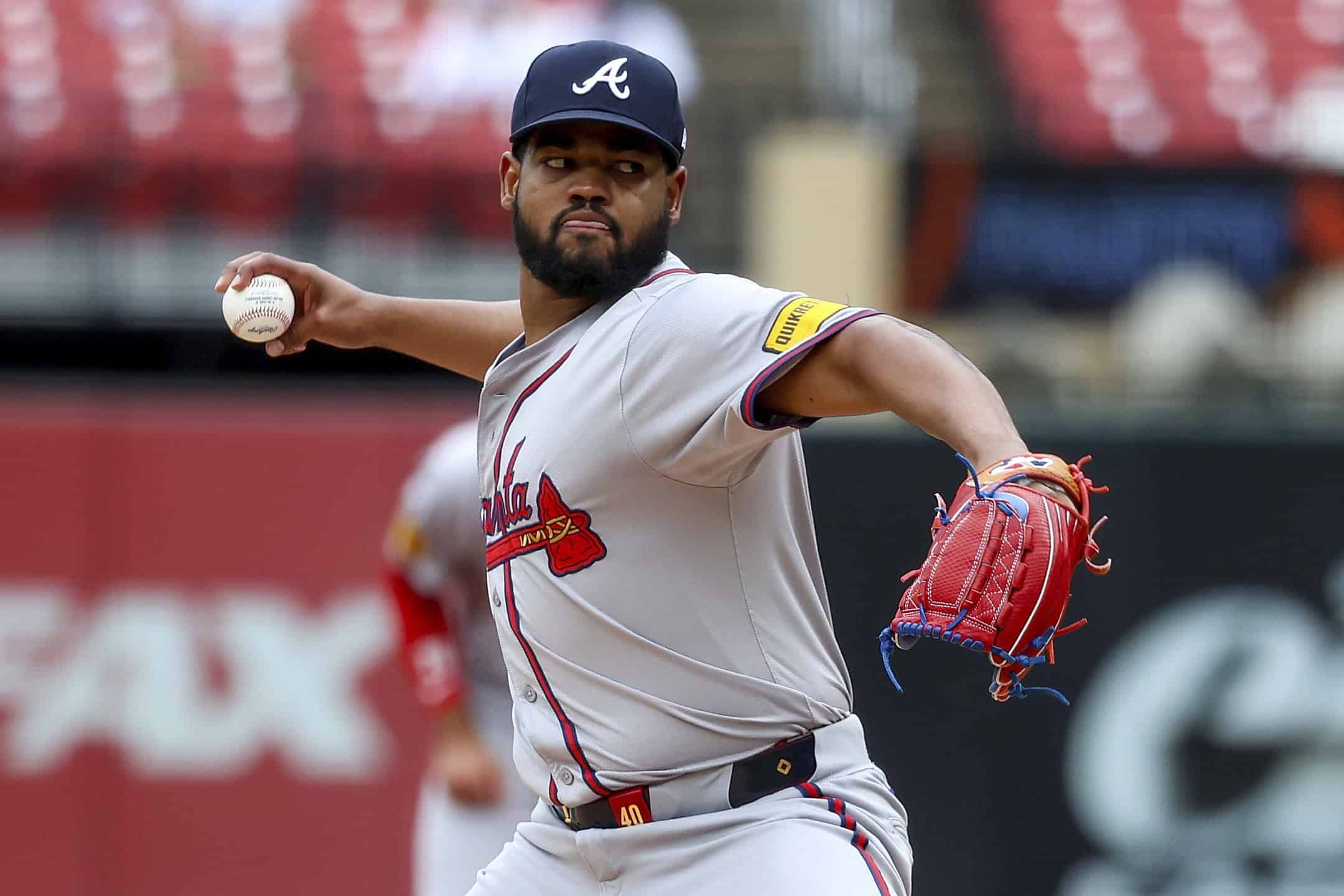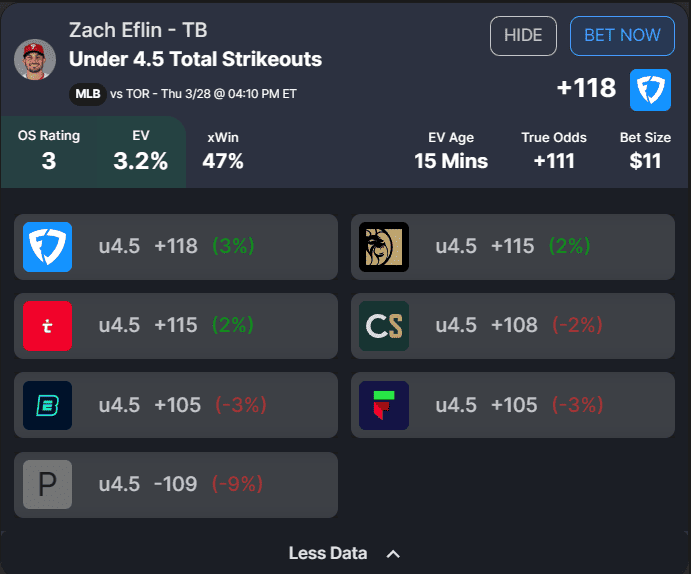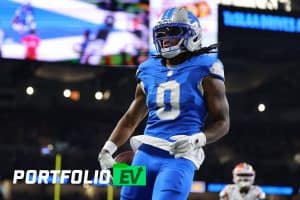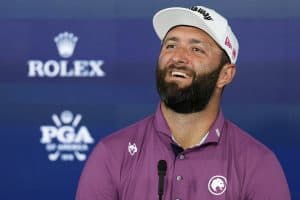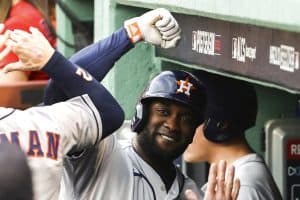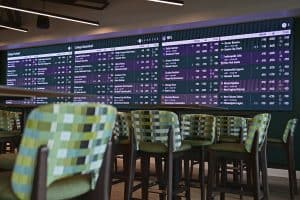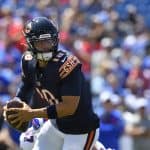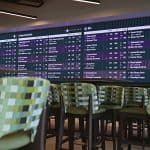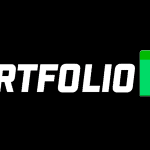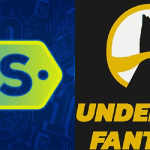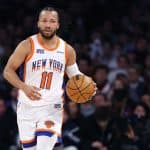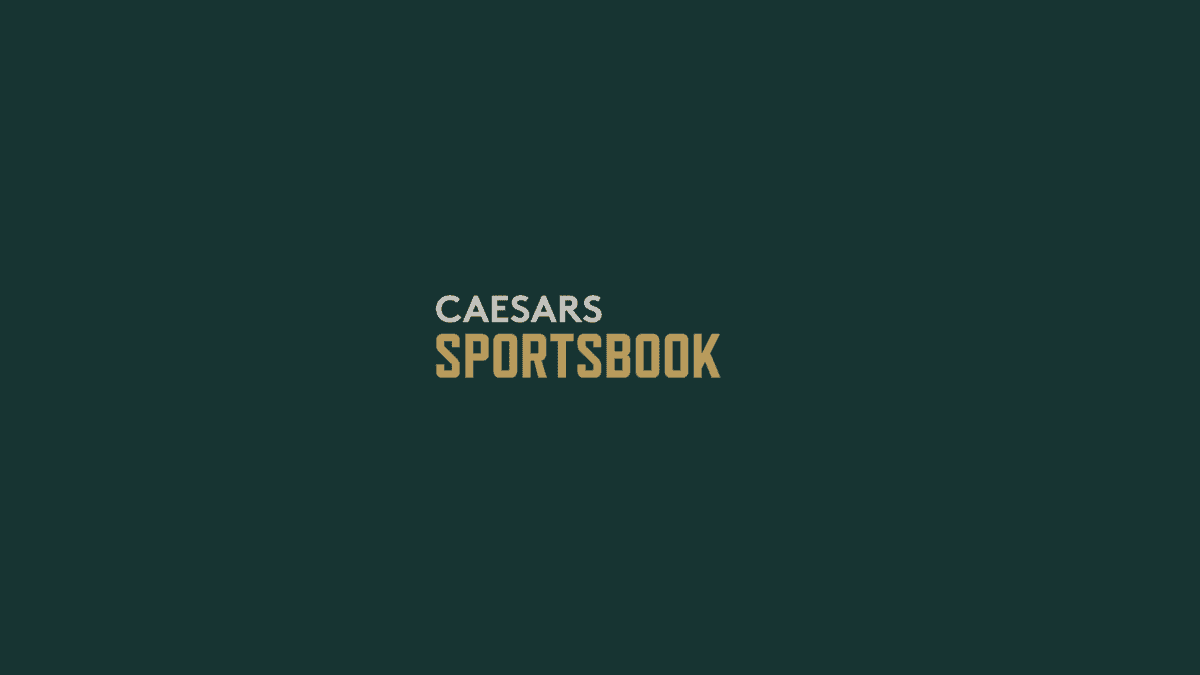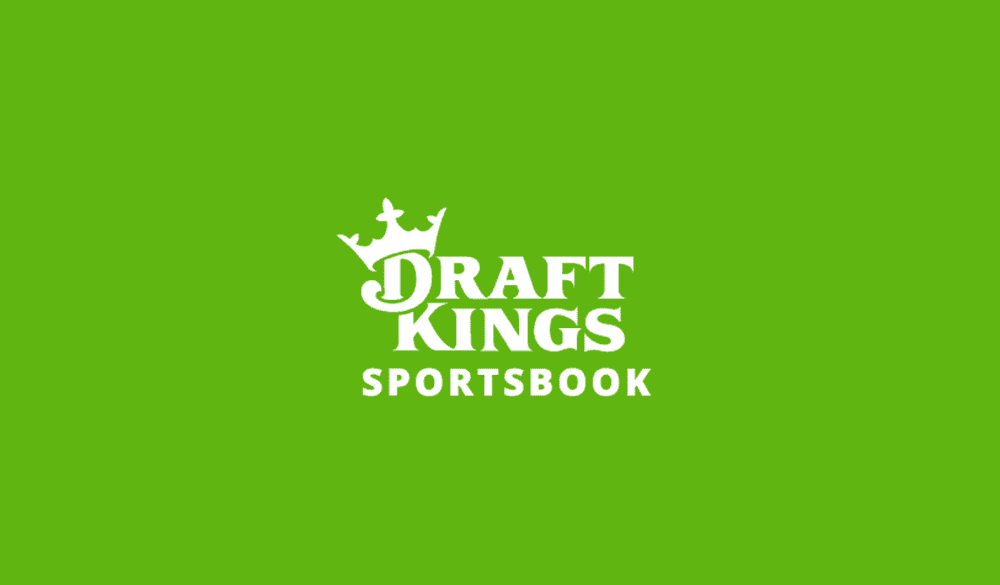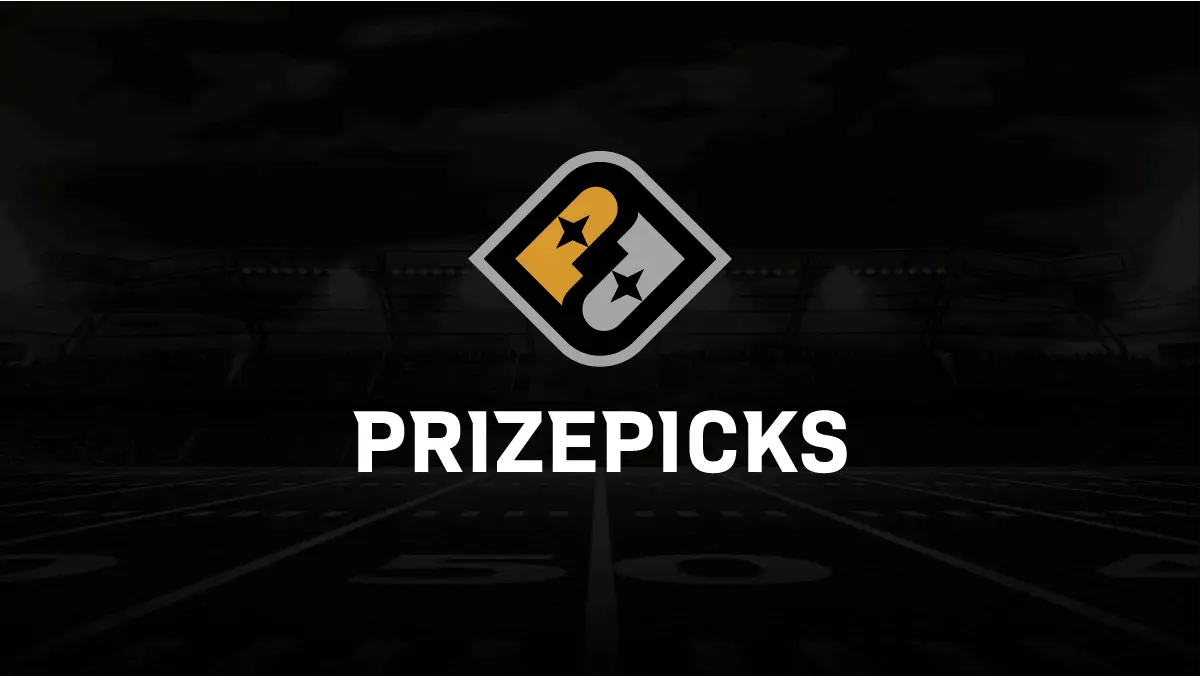Few sports are more fun for sweating player prop bets than the MLB. You can tune in during the workday to sweat out picks, and you’ll always have stuff to sweat every night. If you’re still confused after this story, or you’re looking for how to bet on MLB sides and totals or how to bet on home runs, we have other Betting 101 posts for you to check out. Make sure to check out our MLB betting tools or our MLB betting articles as well! Without further ado, let’s talk about how to bet on MLB player props as I dish out my tips, strategy and expert advice.
How to Bet on MLB Player Props: Tips, Strategy & Expert Advice

Portfolio EV helps you grow your bankroll and maximize long-term profits with ease. Start unlocking more +EV bets with a FREE TRIAL; visit our Portfolio Betting page to get started!
How to Bet on MLB Player Props
MLB player prop betting can be incredibly entertaining. Sweating out a batter to rack up multiple bases or a pitcher to get a set amount of strikeouts will have you watching every relevant at-bat on pins and needles. But MLB player prop betting is more fun when you’re making money than when you’re not, so how do you turn your interest in baseball betting into a profitable hobby?
There are two key techniques for becoming a profitable baseball bettor. Some choose to study players’ statistics in hopes of projecting them for a certain amount of bases, steals, strikeouts — you name it — to give them an edge on the sportsbooks. Both actual stats, expected stats and splits are useful to this end, and park factors are an element unique to MLB player prop betting. But before we get into some of the best methods to make projections, let’s talk about Portfolio EV’s market-based approach.
And before you ask whether our market-based approach to MLB betting is profitable, the answer is yes, and you can click here to see for yourself!
How to Use Portfolio EV
So if we aren’t using projections to make our MLB player prop bets, what are using? That’s simple: the betting market. Instead of looking to glean an edge from, say, recent Gunnar Henderson at-bats against RHPs on the total bases market, we can find an edge by looking at the odds for Henderson to record multiple bases at different books.
In short, you’ve got two main methods if you’re hoping to become a profitable MLB player prop bettor: a projections-based approach or a market-based approach. What’s great about the latter option is that you don’t have to understand much about baseball — you only have to know how sportsbooks operate. Both approaches simply employ a different process to arrive at an estimate of the odds a given bet will win to identify wagers with positive expected value, or +EV.
A market-based approach relies on the premise that some odds — and, necessarily, some action bet on those odds — are sharper than others. Pinnacle, a sharp, high-limit sportsbook, will suffer more of a loss from an inefficient line. That means that if Pinnacle is selling Henderson under 1.5 total bases for -110 while a public book has the same bet priced at +120, it’s probably sharp to buy the under for that amount.
However, knowing which books are sharper than others (and knowing when you’re getting enough edge for a bet to be +EV) is difficult, which is why Portfolio EV’s MLB betting model does the hard work for you. Let’s take a quick look at an example wager and how our product team describes each of the key terms.
Bet Size: The recommended bet size as a percentage of your bankroll. This metric is based on a fractional Kelly Criterion approach that leads to a reasonable balance of minimizing risk of ruin while maximizing potential reward.
EV: An abbreviation for “expected value,” this metric estimates the long-term profitability of a wager by taking into account the probabilities/payouts associated with each potential outcome.
xWin: The probability of winning the bet implied by the Sharp Sportsbook Algorithm true odds.
OS Rating: The OS rating provides a rating for each +EV bet. An OS rating above 20 signifies an exceptional bet. Ratings between 10 and 20 are highly favorable bets. Finally, a rating between 0 and 10 indicates a solid bet. We factor in the EV, expected win, bet size, and negative geometric drag to calculate this rating.
Hold: The synthetic hold across the entire market, which is the loss a bettor would sustain if he bet both sides of the market to win equal amounts. The larger the hold, the more difficult it is to beat that market.
True Odds: Odds that represent the real statistical probability of any outcome in a particular sporting event.
How to Use MLB Statistics in Player Prop Betting
Using Traditional Stats | Expert MLB Player Prop Advice & Tips
The most basic way to create an MLB player prop projection comes down to simply using a player’s traditional stats. Of course, baseball betting is a bit different than usual in that the opportunities a player may get to record an actual stat will vary per game. For example, a player playing for a home favorite may only have eight innings to record at-bats. Likewise, a starting pitcher lining up against a low-quality opponent may stick in the game longer, giving him more chances to record strikeouts.
Batter Player Props
Let’s go through a few popular types of MLB player props to discuss how actual stats can be used to generate projections. Hits are a pretty simple one. The go-to traditional statistic for hits is a player’s batting average, which calculates their hits per at-bat. If we can estimate their total at-bats, we’ll have a good sense of their probability of recording a hit. Importantly, not all plate appearances count as at-bats — sacrifices, walks and HBPs all don’t count. So how can we best estimate a player’s total at-bats?
We can start by establishing a floor for their possible number of plate appearances. A batter in the first two-thirds of the order for a road team (or the first third for home teams) must record at least three plate appearances per game unless substituted out. Players outside those parts of the order must record at least two.
Now that we’ve established a floor (and since we can’t establish a hard ceiling), let’s work to develop a rough projection. In 2023, Shohei Ohtani started 135 games, recorded 599 plate appearances, 497 at-bats and 151 hits. That means averaged 4.4 plate appearances per game, 82.9% of which were at-bats, and recorded a hit 25.2% of the time, slightly lower than his batting average of 30.4%.
If Ohtani were in the top third of the order at home, at those rates, he would have at minimum a 72.6% chance of recording at least one hit. With an extra plate appearance, that would tick up to 100.8%; with five plate appearances, 126%. However, while it’s highly probable that Ohtani will get a hit, let’s not forget that he went hitless in 37 of his 135 games (27%). For a more accurate projection, you’d want to factor in stats like hits allowed by the opposing pitcher, so let’s talk pitching next.
Pitcher Player Props
Next, let’s discuss strikeout props. Strikeouts per nine innings (K/9) is a traditional stat often used in conversation about how effective a pitcher is at punching out opposing batters. This metric is a bit easier to use for our purposes than, say, batting average, as we need not filter out plate appearances. However, we still need to project just how many opportunities a pitcher will get to record strikeouts.
While we don’t have an easily calculated floor, we do have a rough ceiling: 27 outs for home pitchers and 24 outs for road pitchers. That number doesn’t count extra innings, but starting pitchers rarely stick around for extra baseball. Further, only the most efficient pitchers have a chance to make it through that many outs — most will get pulled at around the five-inning mark.
You can keep track of a pitcher’s per-game volume with several traditional stats, all of which can help you make projections. Pitch count, innings pitched and batters faced are all different stats that offer insight into how long a pitcher can stick in a game. Further, the quality of an opposing offense can cause a pitcher to get knocked out of the game early or stick around until late.
You’ll also need to estimate a player’s efficiency, which, just like everything else, will be affected by the quality of an opposing offense. Let’s use Clayton Kershaw for this example.
In 2023, Kershaw started 24 games, pitched 131.2 innings and averaged 9.4 K/9. If he pitched his usual 5.5 innings and struck out batters at his usual clip, he would have racked up 5.7 strikeouts. But if you expected Kershaw to pitch a little longer, say, 6.1 innings, that number would tick up to 6.6.
Using Expected Stats | Expert MLB Player Prop Advice & Tips
Traditional stats are great to give you a rough estimate of how much of a relevant stat a player produces. That’s especially helpful because most MLB player prop bets are on traditional stats — you’re likely betting on a player’s hits, strikeouts or total bases, not their expected batting average (xBA). But expected stats like xBA may actually offer more insight into a player’s production than hard counting stats, especially since they allow us to compensate for the consequences of variance.
Let’s start by discussing xBA and expected slugging percentage (xSLG). These metrics are great for both hit and total base bets as they give you a more accurate estimation of what a batter should be doing based on their peripheral stats. Statcast uses numbers like exit velocity and launch angle to estimate the probability of a given batted ball becoming a hit (hit probability) — and the probability of it generating extra bases — to calculate a player’s xBA and xSLG.
Those metrics can also be used to calculate expected stats for pitchers. There are a few extra steps, of course — we need to arrive at expected weighted on-base average (xwOBA), which isn’t as helpful for batters as walks don’t count as total bases. Once we’ve got xwOBA, it’s possible to generate a pitcher’s expected earned run average (xERA), which can help us estimate how many outs they should be around to produce.
We can also use the above information to calculate both expected home runs (xHR) and xHR allowed. These metrics are incredibly useful for prospective home run prop bettors, as batters who play in pitcher-friendly parks may have artificially deflated home run numbers, while pitchers who play in those same parks may be getting overrated due to the favorable conditions from which they benefit at home.
Using Splits | Expert MLB Player Prop Advice & Tips
Splits are another source of valuable information when handicapping MLB player prop markets. Whether they’re home and road splits or handedness splits, they can help you understand when a batter has an edge versus a given starting pitcher — or when a pitcher tends to step up in the strikeout department. Let’s get into the top splits I consider for MLB player prop markets:
Handedness splits: The nature of baseball makes paying attention to handedness important. Generally, hitters perform best against opposite-handed pitchers. That isn’t always true — for example, Freddie Freeman slashed .335/.399/.609 versus same-handed pitchers versus .330/.414/.548 versus opposite-handed ones. Freeman’s splits speak to the importance of knowing whether your targeted player performs better against a certain type of pitcher because there are exceptions to the rule.
Home and road splits: Also called home and away splits, these splits give us insight into how a player performs in front of a friendly crowd versus an unfriendly one. There are more factors baked into home and road splits, like travel, routines and more, which is why they’re so valuable. However, they’re somewhat subsumed by park factors, which we’ll get into below — a hitter who plays home games in a hitter-friendly park is likely to perform worse on the road.
Timing splits: Whether on a month-by-month, week-by-week or pre- or post-All-Star Break basis, timing-based splits can give you insight into a player’s recent form. Some batters are streakier than others — to revisit our Freddie Freeman example, he started the year in poor form by slashing .292/.377/.451 but turned things around in May by slashing .400/.462/.722.
Park Factors | Expert MLB Player Prop Advice & Tips
Park factors help you understand the batted ball outcomes of a given ballpark. Obviously, a high-elevation stadium like Coors Field is conducive to more extra-base hits, and we can track them with data from Statcast. Let’s take a look at the friendliest parks for batters, per their rolling three-year average:
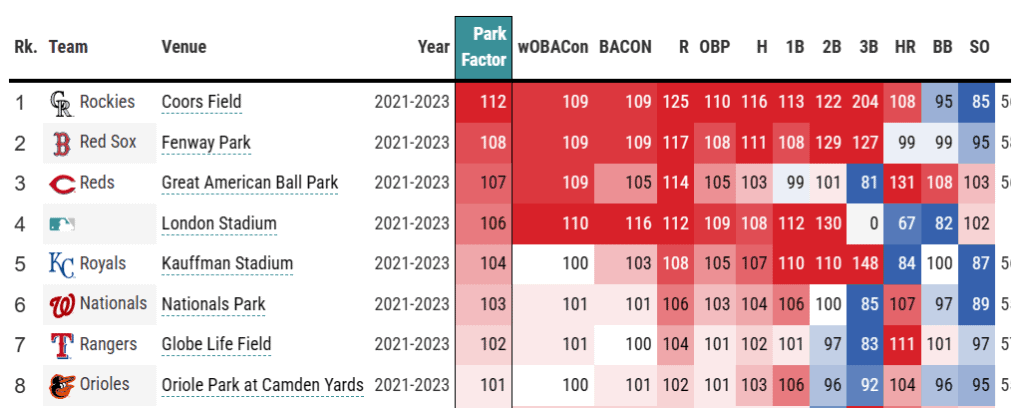
Hitters playing Coors Field, Fenway Park and Great American Ball Park see the greatest gains, per Statcast. Notably, that doesn’t mean all types of hits are distributed equally — home runs are far more common at Great American Ball Park than at Coors Field or Fenway Park. Conversely, doubles and triples are far rarer at that park than at Coors or Fenway.
The books know to consider park factors when setting their lines, but one-off games at places like the London Stadium can sometimes catch them off guard. Still, understanding park factors is a meaningful way for you to find an edge on the books — or at least to understand why an MLB player prop bet has the price it does.
Another part of park factors: the weather. Humidity and warm temperatures can help the ball travel further. The wind can help, too — if it’s blowing out. If the wind is blowing in, it can hurt. Make sure to check our MLB weather report for today’s conditions!
